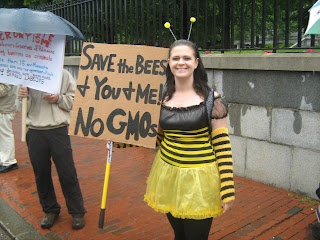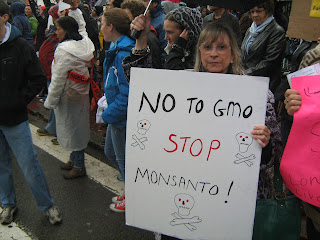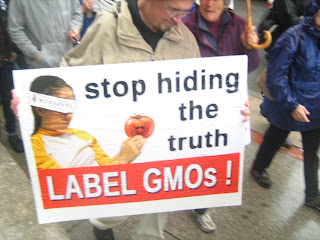A new round of climate talks began in Warsaw, Poland this week. Between the severe drought that engulfed much of the US this year, the high number of temperature records, and the many extreme weather events
globally, of which Typhoon Haiyan, the strongest on record, is the latest, lots is at stake.
It's also easy to summarize. Here is the temperature anomaly (departure from the long term average) from the National Climatic Data Center of the National Oceanic and Atmospheric Administration (NOAA):
The global average temperature, decade by decade, has been increasing. The main driver for this increase is carbon dioxide emitted through the burning of fossil fuels. If there was any sanity in the climate negotiations, then viewing the above figure should stir nations to action. That was the reasoning behind the Kyoto Protocol, an ambitious international treaty, which did not succeed in reducing global carbon dioxide emissions. The present round of climate talks is to set up a framework for negotiations in Paris in 2015, a new Kyoto accord, as it were, which will come into effect in 2020.
How are nations responding to the evidence of global warming? By wringing their hands mostly, as this nice summary from NPR shows. Developed countries have pledged reductions of carbon dioxide emissions in the range of 10 to 20 percent below 1990 levels by 2020, and developing countries, like India and China, have yet to make any real pledges. But when you look at what the present emissions are (below) you can see that these pledges, many of which will not be successful, you get the idea that much more needs to be done.
Clearly, looking at the above figure, any sort of deal is going to require an agreement between China, the EU and the US, the three biggest emitters. It's also apparent that talk of cuts of 10 to 20% within ten years seem inadequate (for the US, 17% below 1990 levels would be 5000 million tons carbon dioxide, which doesn't look like much of a decrease at all), but I suppose it's a start.
It's hard to see where the leadership will come from to see the talks end on a positive note. Bringing China on board is key, but that's unlikely until developed countries pledge greater cuts and at the moment in North America, the climate for such cuts is lukewarm at best. (In June, President Obama did address climate change, in a speech that was heavy on new technologies, while in Canada Prime Minister Stephen Harper continues to push for pipelines for Alberta tar sands oil, despite the majority of Canadians wanting him to take a leadership role on climate change.)
In October, a study published in Nature argues that we are shockingly close, within a few decades, to the time when changes in weather patterns become irreversible. It's our planet and our future. We're well beyond the time for debate and firmly in the time for action. We must demand it.


















